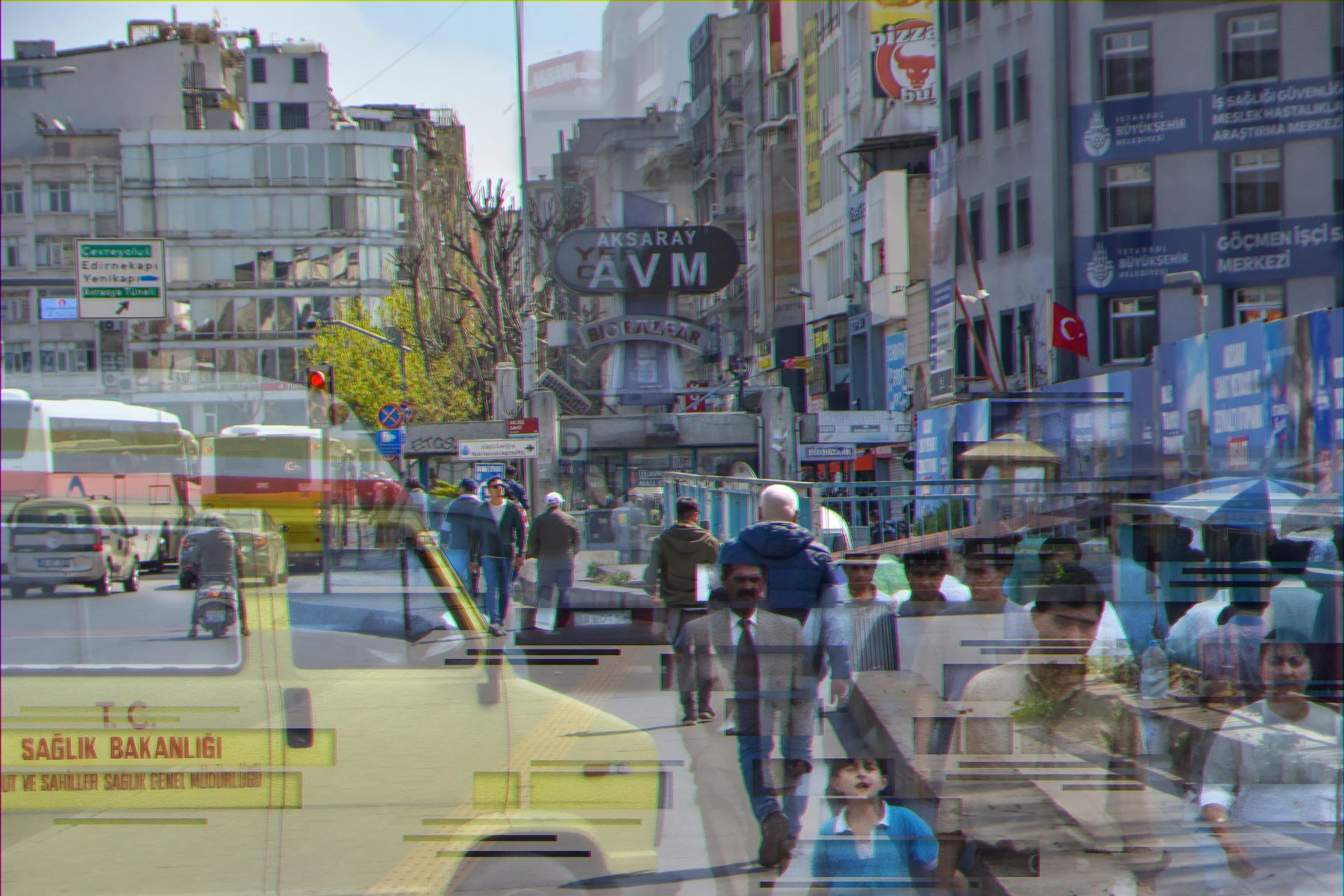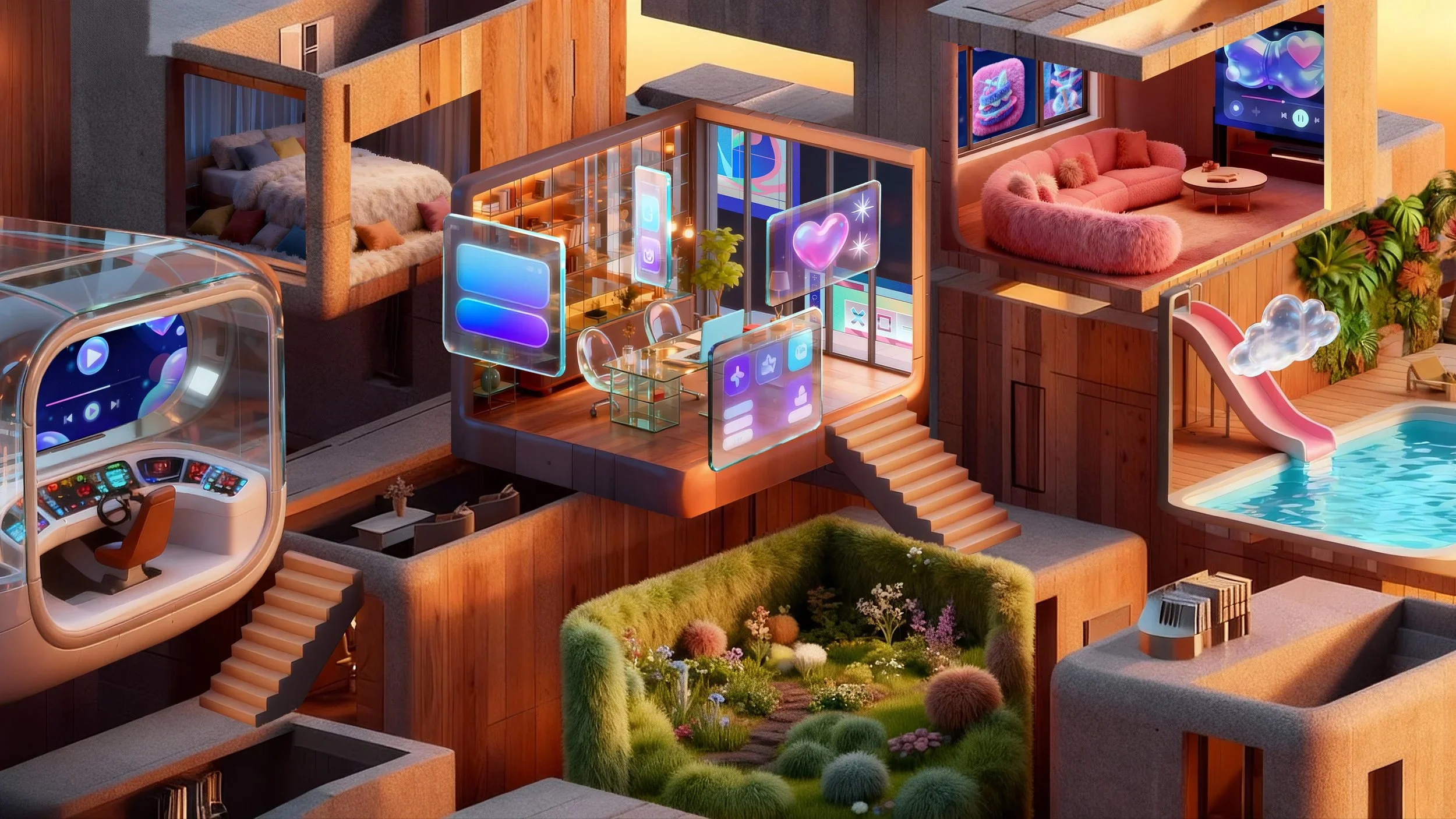10 Questions with Daniel Ellwood
Daniel Ellwood, a 34-year-old British artist based in Berlin, is known for his distinctive scalpel technique, which he developed under the guidance of his art mentor. With a Master of Arts in Art & Design, Ellwood has exhibited globally, including in the UK, Germany, and UAE. His works often appear at major art festivals, and his animated installations bring psychedelic energy to his creations. Influenced by his Berlin surroundings, he has expanded his practice to include digital design and modular video synthesis, drawing audiences into immersive visual experiences that blend organic forms with abstract depth.
Daniel Ellwood - Portrait
ARTIST STATEMENT
Daniel Ellwood’s work delves into the intersection of chemical and organic realms, exploring themes of nature, structure, and the shadows within them. Using a scalpel to reveal hidden layers on a monochromatic canvas, he transforms still images into dynamic compositions that echo both precision and spontaneity. His technique, born from experimentation in his youth, emphasizes stark contrasts and intricate detail, inviting viewers into a world of abstraction where line and form breathe. Now incorporating digital design and animation, Ellwood’s work continues to evolve, blending traditional and modern methods to push the boundaries of contemporary art.
Shikaka, Mixed Media, Scalpel & Digital, 841x1189 mm, 2022 © Daniel Ellwood
INTERVIEW
Can you tell us a bit about your background and what led you to pursue art as a career?
It started when I was around 7 years old. My parents bought me a sketchpad and pastels, and I would create collages of shapes, nature, and animals. This style has stayed with me. Throughout school, I focused heavily on creative practices, particularly creating characters through doodles, clay masks, or impressions of figures.
I wasn’t great at drawing still life, but adding flair made me feel freer in my art. In secondary school, my art teacher, Mr. Dare, supported me and introduced me to a variety of styles. This guidance helped me excel in exams, pursue a degree in Contemporary Art, and later, a master’s in Art and Design. That set the wheels in motion for my art career.
Your scalpel technique is very distinctive. How did you come to develop this unique approach?
It began in an art class where I was working on a black mountboard using white charcoal and crayon to design autumn leaves. As a left-hander, I kept smudging the charcoal, so my teacher handed me a scalpel and suggested I cut lines and peel back the surface to reveal the white underneath. Instantly, I was hooked.
The lines were precise, and the veins on the leaves stood out so clearly. I also found the process of cutting and peeling incredibly satisfying. Black mountboard, with its cream core, is perfect for this technique. From that moment, I carried this method through my studies, exhibitions, and live installations.
Monkey Business, Scalpel Art, 841 x 594 mm, 2015 © Daniel Ellwood
How does your environment in Berlin influence your creative process and themes?
Early in my career in England, my inspiration mostly came from books or online. I visited some galleries, but nothing resonated deeply. During my master’s, I took a two-week trip to Berlin with a friend who was a music producer. We immersed ourselves in the city’s music and art scene, which was buzzing with energy.
Berlin’s endless galleries, art squats, and underground music scene inspired me on multiple levels. The diversity and creative freedom here allowed my imagination to run wild. Even after 10 years, Berlin’s environment continues to influence my work, with new experiences and inspiration waiting around every corner.
You’ve recently incorporated digital design and animation into your practice. What inspired this shift, and how has it expanded your work?
During my Contemporary Art degree, I began experimenting with stop-frame animation. Like my scalpel art, it involved cutting out pieces of cards and making small, incremental movements to create patterns, characters, and stories. It required patience, but I loved the process.
At university, I created animations using up to 2,000 photos for narratives. Later, while attending electronic music festivals, I began showcasing my animations, evolving them into collages and backdrops for DJs. Living in Berlin, surrounded by DJs, it felt natural to merge music and art visually.
Discovering modular video synths was transformative. Creating visuals from scratch using analogue systems has become central to my work, leading to my role as a head visual artist at festivals across Europe.
On the digital side, I taught myself graphic design, moved to Dubai for work in advertising, and eventually began merging scalpel art with digital techniques. This allowed me to explore colours, effects, and distortions, expanding my creative possibilities and broadening my audience.
Neldawg, Scalpel Art, 841 x 594 mm, 2017 © Daniel Ellwood
Hound Dawg, Scalpel Art, 841 x 1189 mm, 2022 © Daniel Ellwood
Your works balance precision and spontaneity. How do you achieve this harmony in your creative process?
The precision comes from the scalpel, which allows intricate, controlled cuts into the mountboard. Once the blade is embedded, you feel locked in, free to move around the board and create perfect curves and lines.
I typically start with one big shape and design within that, holding off on peeling back layers for the first hour. Adding key elements like eyes, smiles, or organic and industrial motifs without revealing them immediately adds spontaneity to the process.
Sometimes, I’ll cut in one direction for an hour, then flip the board 90 degrees to visualize something entirely new before continuing. This freedom to explore without a clear goal is something I intentionally embrace. The final vision formulates organically as I develop the piece.
Can you share more about the role of abstraction in your art? What do you hope viewers take away from it?
My work often invites different interpretations. I aim to create figures and characters, but the meaning is left to the viewer. Many people have bought my work, hung it upside down, and told me a story about what they see, which I love.
Each piece has a name that represents how I perceive it, but I’m happy for viewers to take their own journey. The monochromatic canvas enhances the forms and patterns, giving them a life of their own. When I use colour, I lean into vibrant, psychedelic influences, creating works that feel completely different from my earlier monochrome pieces.
You’ve exhibited your work in several countries. How has showing your art in different cultural contexts shaped your perspective?
Every country has its own artistic preferences, so I tailor my presentations accordingly. For example, in the UAE, I focused on vibrant patterns and colours rather than character-driven pieces, as I felt they would resonate more with local audiences.
In Berlin, I feel free to be as experimental as I want, pushing boundaries and presenting bold works with confidence. Berlin has given me the space to evolve and experiment in ways I haven’t experienced elsewhere.
Bosh, Mixed Media, Scalpel & Digital, 841x594 mm, 2021 © Daniel Ellwood
Masked, Mixed Media, Scalpel & Digital, 841 x 594 mm, 2022 © Daniel Ellwood
What has been the most memorable project or exhibition of your career so far, and why?
That would be the Gottwood Festival 2024. As the festival’s art director, I had the opportunity to exhibit my work on a large scale, projecting animations onto the forest canopies and a beautiful manor house overlooking the main stage and lake.
After 13 years of attending the festival, I finally achieved my dream of mapping the house with visuals over four magical nights. Seeing my work projected in the middle of the woods, surrounded by music and thousands of people, was unforgettable. I’m thrilled to be doing it again this year!
Looking to the future, are there any particular techniques or themes you’re excited to explore in your work?
Yes! After almost 20 years, I’m picking up the paintbrush again. I recently started applying acrylics to blackboards, letting the vibrant colours bounce off the dark background. Combining this with my scalpel technique has opened up entirely new creative possibilities.
In animation, I’ve been using live video feeds through modular synths to transform DJs into animated visuals, layering them with patterns and effects. This year, I’m looking to collaborate with more artists, live stream performances, and push the boundaries of what these systems can do.
And lastly, what are you working on right now, and what can we expect to see next from you?
I’ve just been given a portable hand scanner and plan to use it around Berlin to capture textures, graffiti, landscapes, and other inspiring visuals. I’ll integrate these elements into my animations or apply them to my blackboards, combining them with paint and scalpel work.
Summer is already shaping up to be busy with animation showcases, and I’m also preparing to curate a small gallery space in Berlin this spring. Exciting times ahead!
Artist’s Talk
Al-Tiba9 Interviews is a promotional platform for artists to articulate their vision and engage them with our diverse readership through a published art dialogue. The artists are interviewed by Mohamed Benhadj, the founder & curator of Al-Tiba9, to highlight their artistic careers and introduce them to the international contemporary art scene across our vast network of museums, galleries, art professionals, art dealers, collectors, and art lovers across the globe.





















